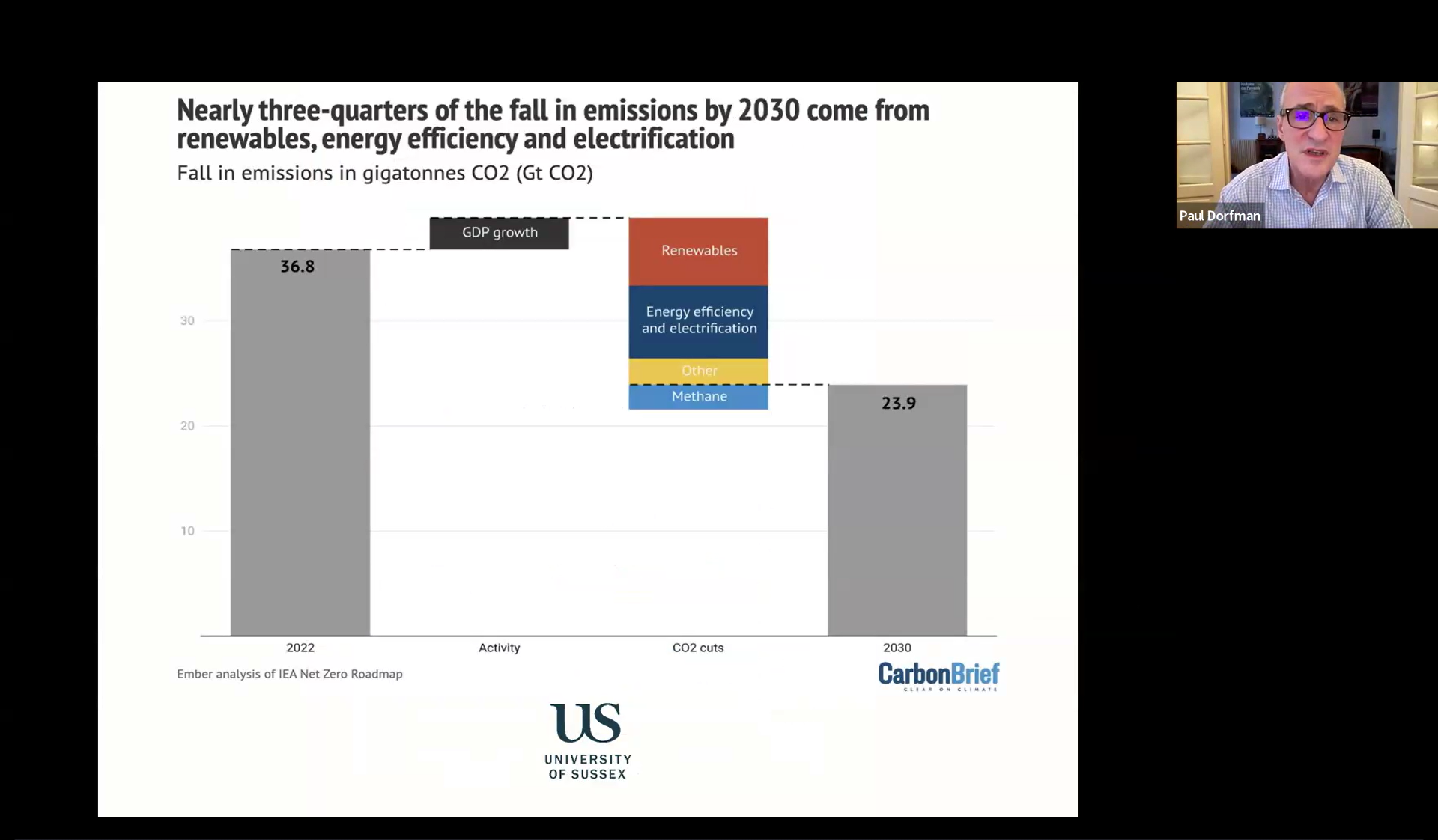Monday, 19 February, 2024
As part of our ‘‘WEC Mondays-Guest Speaker Series’’ we hosted Dr. Paul Dorfman, Chair of Nuclear Consulting Group.
In Dr. Dorfman’s presentation on ‘‘Climate and Power: Nuclear and/or Renewables-Plus’’, Dr. Dorfman highlighted:

- Climate crisis and its impacts have become part of our reality. Compared to previous decades, extreme weather events became more frequent and more devastating in the last decade. In 2023, sea ice in the Antarctic reached an annual maximum extent of 96 million square kilometers(6.55 million square miles), setting a record low maximum in the satellite record that began in 1979. As a result, the rate of precipitation and seasonality had to adjust to new norms all over the world.
- Ocean temperature has hit the highest on record. Extra half a degree difference between 1.5 °C – 2 °C increases the risk of tipping point. On 3rd February 2024, daily average sea surface temperature set a record high of 21.05 °C, where the previous record was 21.02 °C on 23 August 2023. The difference between where the average sea surface temperature should be and where it is now is quite concerning, not to mention the upward trajectory of average sea surface temperature which is simply alarming.
- To tackle the climate crisis, a historic agreement was signed at COP 28 to triple nuclear capacity to 1.2 TW by 2050 and triple renewable capacity to 11.5 TW by 2030. While the renewable capacity goal is ambitious and certainly brought into the limelight during COP 28, same can not be said for the nuclear capacity goal. In order to explain why nuclear capacity goal is at the backseat of global effort to cope with climate change, we need to investigate the affordability and reliability of nuclear energy given the fact that time is running out.
- The UK has set an ambitious goal to add 24GW of nuclear capacity by 2050, this was enabled by passing of the ‘‘Nuclear Energy Finance Act’’ which reinforced the liberalization of planning, environmental, local democratic accountability rules and norms when it comes to nuclear energy. However, the cost to profit ratio may undermine The UK’s nuclear capacity goal. For instance, the estimated cost for Hinkley Point C Nuclear Power Plant was estimated at £ 18.2 bn in 2016, the updated estimate in 2024 was £31-£35 bn.
- The massive upfront cost of nuclear power plants is one of the many reasons why nuclear energy is falling behind the renewables. The other reason is the Levelized Cost Of Energy (LCOE) for the renewables and other low carbon energy sources. It shouldn’t be surprising to see that LCOE for renewables such as solar and wind are 3-4 times lower than that of nuclear, moreover, even renewables + storage have much lower LCOE than nuclear which explains why renewables are going to do the heavy lifting during the energy transition and not nuclear.
- China is a great example of increasing renewables and nuclear capacity at the same time. However, it must be noted that China has added more wind and solar capacity during the first 9 months of last year (215TWh) than all its nuclear reactors under construction will provide(206TWh).
- Due to lower cost and higher efficiency, IPCC has stated that the renewables are 10 times more efficient than nuclear at CO2 mitigation to 2030. For the reasons that we’ve mentioned above, renewables are attracting most of the investment and finance while, nuclear investment had been on a flat trajectory in the last several decades.
- While the nuclear energy sector was facing challenges such as low investment, huge upfront cost, construction delays and safety issues, the impacts of climate change have exacerbated these existing conditions. Extreme weather events jeopardize the physical safety of nuclear power plants, which can have dire consequences if an accident were to occur.
- Small Modular Reactors (SMRs) are thought to be the solution for traditional nuclear energy’s cost and long build times and other problems, however, SMRs are up to a decade behind large reactors in terms of their commercial development.
- Time is running out. Consequently, we should focus on the expansion of renewable energy in all sectors, raid growth and modernization of the electricity grid and management, energy conservation and efficiency in our efforts to mitigate climate change.
